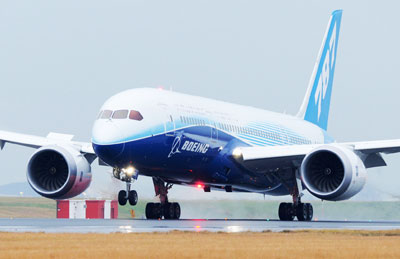
Boeing starts building 737 wings with robotic system
WASHINGTON, March 14, 2015
Boeing Company has started using a new automated system to build wing panels for 737 jetliners, an important step in preparing to hit record production speeds while introducing new models of the popular plane.
The robotic system, known as the Panel Assembly Line, or PAL, this week drilled holes and installed rivets for the wings of a production aircraft, the first such use of the system since installation began last summer, Boeing officials told Reuters during a visit to the Renton, Washington, plant.
PAL replaces older-generation machines that drilled the panels, but left workers the task of installing rivets, a laborious process that led to occasional injuries and defects.
PAL is designed to cut injuries in half, slash defects by 66 per cent and reduce production "flow" time by 33 per cent - all on half of the factory footprint.
Its start-up was widely awaited because the 737 factory accounts for two-thirds of the planes Boeing makes and PAL will help enable the company to boost production.
Inside the factory, a 60-tonne, blue machine, looking something like a futuristic car wash, glides silently on hidden rails over a wing panel held in a jig.
With a quiet "hiss" the machine zips holes into the metal wing panel and installs rivets, connecting pieces known as stringers to what will become the bottom surface of a wing.
Five machines, made outside Seattle by Electroimpact, have been erected in the plant. Boeing will install eight in total, with a ninth as a spare. They replace older machines made by Gemcor, based in West Seneca, New York.
Boeing's two assembly lines in Renton make 42 of its 737 jetliners a month in competition with the Airbus (AIR.PA) A320. Boeing plans to increase that to 47 and then 52 a month by 2018.
This summer it will open a third line that will start making the newest version of the plane, the 737 MAX. Boeing plans to start building the first Max in August and finish in November. Boeing has not publicly confirmed the production schedule for the 737 Max. The fuel-saving model will enter service in 2017.
When the third line is running, Boeing could in theory produce 63 of the single-aisle planes a month, 21 from each line. Industry sources have said Boeing is gauging the ability of suppliers to handle 58 planes a month. Boeing declined to comment on any plans beyond its announced target of 52.-Reuters







